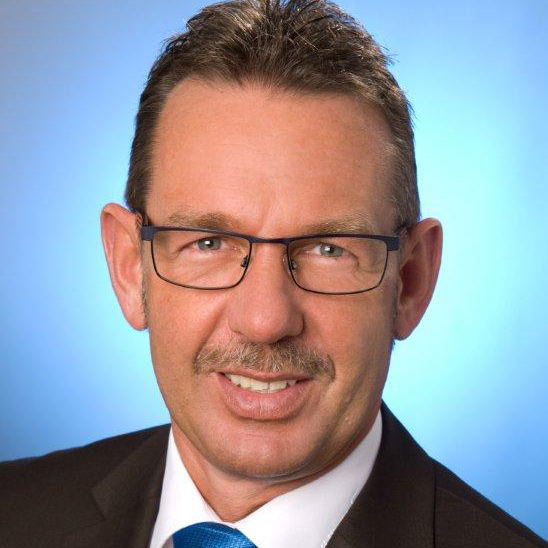DIELESS BLANKING IN THE MODERN PRESS SHOP
How die-free laser blanking with DynamicFlow Technology from Schuler boosts the efficiency of your press shop.
How die-free laser blanking with DynamicFlow Technology from Schuler boosts the efficiency of your press shop.
Laser blanking lines with DFT are highly flexible and extremely productive manufacturing systems. We use high-performance fiber lasers for the continuous cutting of coil material. The result is extremely high productivity, excellent cutting quality and impressive contour accuracy—especially where delicate body shell blanks are involved.
DynamicFlow Technology makes it possible to cut different materials—including steel, aluminum, and high-strength steels—on a single production line. Even material combinations like ALSi steels for thermoformed components in bodywork structures are easily handled by our system.

Thanks to DFT, cost-intensive blanking dies (along with their time-consuming repair) and the extensive storage space and crane logistics required wherever dies are used are no longer necessary. Developed based on our many years of experience with the rigorous standards of the automotive industry, our laser blanking lines with DFT deliver an impressive package for incredibly flexible production at a comparatively low investment cost. This combination makes DFT a legitimate alternative to conventional die-based blanking systems in the press shop.
Schuler offers the entire process chain—from the coil to the blank stack—from a single source. We work with safety and control concepts featuring the latest technology. The modular design principle allows for application-specific solutions. All system components have proven themselves in the field, are coordinated to work seamlessly with one another, and deliver both superior quality and high system uptime. Additional modules for processing aluminum or high-strength materials are easy to integrate. And our global service network is close by wherever our customers are located.
The above-ground coil line, which is optimized to achieve short setup times, can handle coils with material widths up to 2 150 mm and coil weights up to 30 tons. The gentle and controlled material transport, combined with the outstanding setup results, ensures uninterrupted processing in the laser cell.
In the laser cell, multiple highly dynamic laser cutting heads cut the programmed contour from the continuously moving material coil “on the fly.” These cutting heads work at cutting speeds in excess of 100 m/min. The material is protected against process contamination during the cutting process by the dynamic cutting clearance and the specially designed material transport.
Once the cutting process is complete, the blanks must be separated from the rest of the material (scrap). This occurs through the use of automated systems specially adapted to the individual products. Following the separation, the blanks first undergo a cleaning before moving into the automatic stacking system. This makes it possible to ensure outstanding body shell quality.
|
Versions |
LBL 1.18-S2C |
LBL 1.18-DFT |
LBL 2.18-S-DFT |
LBL 2.21-BP-DF |
LBL 2.21-BP-DFT |
LBL 3.21-BP-DFT |
|
|
DFT - Dynamic Flow Technology |
- |
x |
x |
x |
x |
x |
|
|
S2C - Stop to Cut Technology |
x |
- |
- |
- |
- |
- |
|
|
S - Structural parts |
x |
x |
x |
x |
x |
x |
|
|
BP - Body parts |
- |
- |
- |
x |
x |
x |
|
|
Coil width |
400 - 1850 |
400 - 1880 |
400 - 1880 |
400 - 1880 |
400 - 2150 |
400 - 2150 |
mm |
|
Coil weight |
max. 30 |
max. 30 |
max. 25 |
max. 30 |
max. 30 |
max. 35 |
to |
|
Coil material |
Steel, Aluminum, High Strength Steel |
Steel |
Steel, Aluminum, High Strength Steel |
||||
|
Coil thickness |
0,5 - 4,0 |
0,6 - 3,0 |
0,6 - 3,0 |
0.6 - 3.0 |
0,6 - 3,0 |
0,6 - 3,0 |
mm |
|
Coil speed |
max. 40 |
max. 40 |
max. 40 |
max. 60 |
max. 60 |
max. 60 |
m/min |
|
Cutting head positioning speed |
170 |
180 |
180 |
180 |
180 |
180 |
m/min |
|
Cutting speed |
max. over 100 |
m/min |
|||||
|
Number of lasers |
1 |
1 |
2 |
2 |
2 |
2 | |
|
Rated power per laser |
6 |
6 |
6 |
4 |
4 |
4 |
kW |
|
Blank length |
max. 4000 |
max. 4000 |
max. 2000 |
max. 4500 |
max. 4500 |
max. 4500 |
mm |
|
Stack height |
max. 750 |
max. 750 |
max. 750 |
max. 750 |
max. 750 |
mm |
|
|
Stack weight |
max. 10 |
max. 10 |
max. 10 |
max. 15 |
max. 15 |
max. 15 |
to |
|
Toolingfree Scrap separation |
- |
- |
- |
x |
x |
- |
- |
|
Output |
0 |
0/+ |
++ |
++ |
++ |
++ |
|
We need your consent to load content.
In order to show videos we use the services of third-party providers. These providers can collect data about your activities. Further details can be found under “Learn more”.
Featuring two laser cutting heads, the laser blanking lines 2.18 and 2.21 deliver a modular design and excellent ease of use. Because the system is designed to be installed above-ground, it can also be used in normal logistics buildings. Special foundations, such as those required by presses, are therefore not necessary. The only thing left to do is supply the coils and cart off the stacks! The lines are available for coil widths measuring up to 1 880 mm and 2 150 mm. They can be used to process steel and aluminum for body shell blanks as well as structural parts.
Laser blanking is the digital way to cut blanks. Simply load a drawing and select the material: It’s all the software needs in order to come up with a blanking program. The program is created offline in your office, giving you the ability to simulate various different scenarios to arrive at the optimal combination of material utilization and output. Of course, these part-specific programs can also be saved and modified at any time. The result is a high level of flexibility that significantly reduces development time for optimal blanks while also allowing needs-based production. This not only makes production planning easier, it also opens the door to continuous contour optimizations for the forming process. What’s more: Laser cutting does not require any gap between individual parts—which is typically not the case where blanking dies are used. Combined with flexible nesting functions, this unlocks new potential for saving material.

Laser blanking helps save material:
More than 90% of the blank value is accounted for by material. The total value of the material ejected out of a blanking line each year is enormous. Reducing the amount of scrap material can therefore save millions of euros.
Summary:
The modular laser blanking line is installed on the floor. Lower loads and forces are transmitted to the ground than when a die-based blanking system with a press is used. No press foundation, no loop pit, no press pit, no die cranes, no die storage areas, lower heights between floors, and extremely low noise emissions all translate into significantly lower building costs. The system comes pre-assembled for a shorter installation time.
A crane to handle the coils...and a forklift to take the blank stacks where they need to go. That‘s it.
The building and infrastructure costs of a die-based blanking system normally push the overall costs to double those for the equipment investment alone. A laser blanking line eliminates a large portion of these costs.
Cost-efficiency is a requirement of every production process. That being said, the cost of blanks is determined by more than just the investment in the machinery. The costs for personnel, logistics, buildings, dies, storage areas and repairs, as well as other additional costs, can add up to a much greater amount.
Because the use of a laser blanking line eliminates die-related downtime and lengthy change times, and since the system in fact only stops for a short time when the coil needs to be changed, this technology yields a higher OEE (Overall Equipment Effectiveness) than a conventional blanking system.
Taking all of the aforementioned factors into consideration, we then quickly arrive at the logical conclusion that a laser blanking line is the more cost-effective means of production for manufacturing blanks.

Schuler’s Area Sales Manager of the Americas, Justine Fonteyne, and the Center for Automotive Research’s President & CEO, Carlo Bailo, recorded a podcast to discuss Schuler’s upcoming laser blanking seminar with MetalForming Magazine: “Die-Free Blanking Class A Quality & Structural Parts: 5 Smart Solutions with Laser Blanking Technology.”
The podcast addresses key takeaways registrants can expect when attending this educational seminar, how laser blanking specifically caters to the automotive industry, and why laser blanking is more economically impactful to manufacturers in comparison to conventional blanking lines.
We need your consent to load content.
In order to show videos we use the services of third-party providers. These providers can collect data about your activities. Further details can be found under “Learn more”.
Laser beams instead of tons of dies: At its facility in Kuppenheim, located in Germany’s Baden region, Daimler has now put two laser blanking lines from Schuler into operation. Designed for the series production of Daimler’s compact vehicles, these two lines can be switched over to a different blank shape at the press of a button. The contours are programmed offline and can be simulated to optimize production output.
LASER BLANKING WITH DYNAMICFLOW TECHNOLOGY.
pdf, 1 MByte
Find out more about the full range of advantages offered by Schuler’s laser blanking lines. We’re happy to help you with service for your existing equipment, and can assist you with the planning of new systems. Turn around!

Bernhard Köhler
Sales Director
location_on Louis-Schuler-Straße 1, 91093 Heßdorf phone +49 9135 715-317 mail_outline E-Mail
Berthold Jüttner
Area Sales Manager Europe
location_on Louis-Schuler-Straße 1, 91093 Heßdorf phone +49 9135 715-218 mail_outline E-Mail
Hung Nguyen
Area Sales Manager
location_on Louis-Schuler-Str. 1, 91093 Heßdorf phone +49 160 6174191 mail_outline E-Mail
Justine Fonteyne
Area Sales Manager North & South America
location_on Louis-Schuler-Str. 1, 91093 Heßdorf phone +49 9135 715-387 mail_outline E-Mail